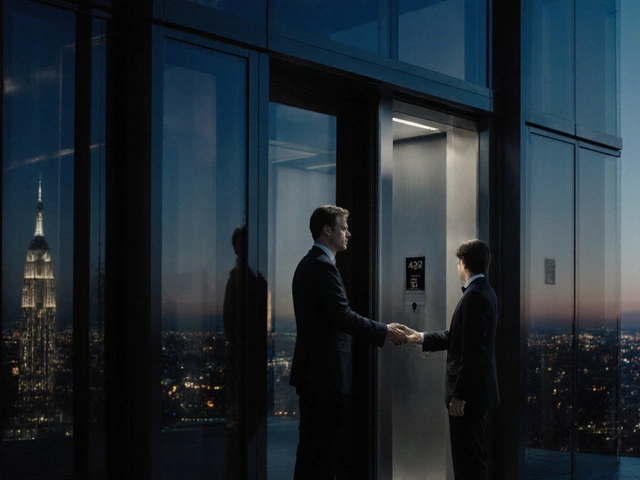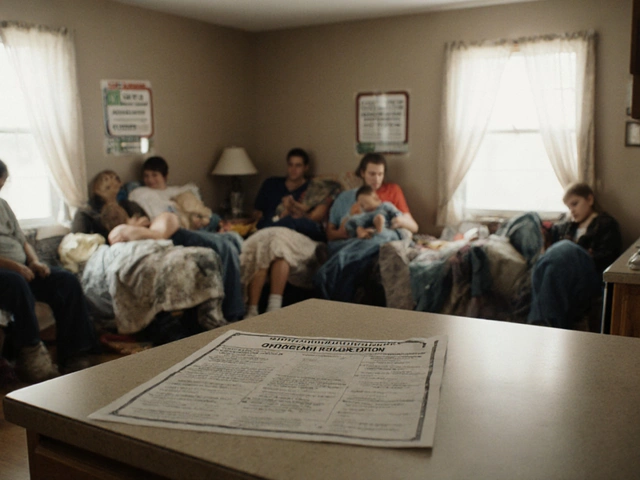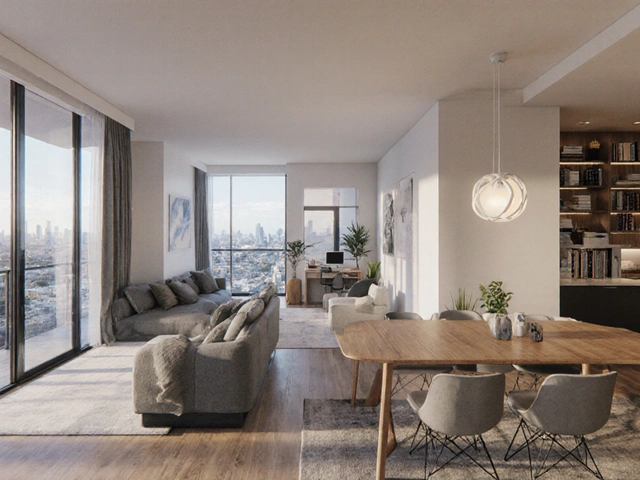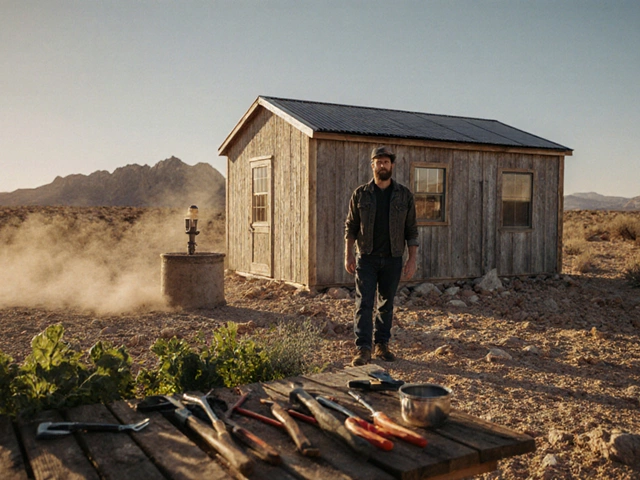Best Rate of Return for Commercial Property Investments in 2025

Picture this: you’ve just walked through the doors of your first major commercial property investment, maybe an office building humming with tenants or a tidy retail site with a reliable anchor. Your mind starts running numbers, not just rent checks. You’re asking yourself the real question—what's actually a good rate of return on this investment? Let’s get into the nuts and bolts of what makes commercial property pay off and what numbers to expect right now.
Understanding Rate of Return: The Numbers That Matter
The heart of any property investment usually comes down to one idea—ROI, or return on investment. When talking about commercial property, folks usually focus on two major numbers: cap rate and cash-on-cash return. Both answer the "what's in it for me?" question, just from slightly different angles.
Cap rate is the classic yardstick. It’s short for capitalization rate, a ratio of the property’s net operating income (think: annual rent minus operating expenses) to the property's purchase price. For example, if your building earns $150,000 after expenses each year, and you bought it for $2 million, your cap rate is 7.5%. Seems simple, right? But context matters. Reliable data from the National Association of Realtors pegged the average cap rate for all U.S. commercial property sectors at around 6.3% in early 2025, but that average masks some sharp differences.
Cash-on-cash return is more personal—how much cash comes back to you relative to the actual cash you invested, not counting financing or appreciation. If you put down $400,000 and earn $40,000 after debt service, your cash-on-cash return is 10%. Investors use this to judge if their money is working hard enough, especially if debt is involved.
So, what qualifies as a "good" rate? Most experienced investors say a cap rate between 5% and 8% is sweet—if you’re in a major city, 5-6% cap rate is solid for stable tenants; in riskier markets, 7-8% offsets bigger unknowns. Anything below 5% usually means the property is exceptionally safe (like a trophy building in Manhattan). Above 9%? You’re either a genius or you missed some red flags—super-high returns usually come “packaged” with risk, like declining areas, volatile tenants, or deferred maintenance.
Main Factors That Impact Your Commercial Property Returns
Not all properties are created equal, and neither are their returns. First off, location really is king. Prime urban sites or areas next to major transport always command lower cap rates, because everyone wants in. In 2025, for instance, industrial properties near logistics hubs in Texas and Georgia are commanding cap rates below 6%—Amazon isn’t going to skip out on rent, so investors accept a lower yield for that reliability.
The type of property matters too. Retail, office space, industrial warehouses, and multifamily—each has its quirks. Right now, industrial property cap rates are often lowest, floating between 5.5% and 6%, since demand for e-commerce storage space keeps climbing. Retail is all over the map: A well-located grocery-anchored strip might fetch a 6% cap, but older malls in declining areas might offer risky double-digit opportunities.
Tenant quality changes everything. A property leased to a regional hospital group or a strong corporate chain gives peace of mind and allows for a lower target return. Small businesses or startups? More risk, but also higher potential upside if you have patience and a solid lease.
Dive into lease terms and you see serious impact on your numbers. Longer-term leases with escalation clauses build in predictable growth. Triple-net leases, where tenants pay taxes, insurance, and maintenance, make your role easier and returns steadier; these are favorites in industrial and retail sectors.
Don't forget the role of market cycles. When borrowing costs (like mortgage rates) surge, cap rates usually rise too, since investors want a premium above their cost of debt. But in times of cheap money, buyers accept lower returns as long as they believe rents will rise. Pay close attention to vacancy rates in your neighborhood—higher vacancy means more risk, forcing sellers to dangle higher yields to attract buyers.
Finally: never underestimate the effect of property management. Good management keeps tenants happy, reduces turnover, and minimizes hidden surprises—bad management does the opposite, and chews up your income faster than you’d believe.

How to Calculate Your True Rate of Return
It’s tempting to get caught up in broker flyers promising eye-popping cap rates, but the only numbers that really count are the ones you run yourself. Here’s how to pull back the curtain:
- Get real numbers from the last year, not just pro-forma guesses. Grab actual rent rolls and all documented expenses—utilities, taxes, insurance, repairs, even janitorial fees.
- Calculate Net Operating Income (NOI). Add up all rent and other income, subtract every expense except mortgage payments and depreciation.
- Divide the NOI by the property purchase price (or current value) for the cap rate.
- For cash-on-cash return, get more personal: subtract mortgage payments from your NOI to get pre-tax cash flow, then divide by your actual cash invested (down payment, closing costs, improvements). That’s your annual cash-on-cash.
- Don’t forget to factor in reserves for big-ticket repairs (roof, HVAC) that could pop up in a few years. Being honest with your numbers now saves you from nasty surprises later.
- Use conservative estimates for rent growth and expense increases. Everyone likes to dream, but steady, lower figures are often more realistic—especially if you’re comparing apples-to-apples properties.
Case in point: Say you find a small office park for $1.2 million. It collects $120,000 per year in rent, with $30,000 in annual expenses. NOI is $90,000. Cap rate comes out at 7.5% ($90,000/$1,200,000). You put down $400,000 and finance the rest with a mortgage. After paying $40,000 a year in mortgage, you’re left with $50,000 pre-tax in your pocket—so your cash-on-cash return is 12.5%. Strong numbers, but only if those tenants stick around and the roof doesn’t need replacing!
Typical Returns Across Property Types in 2025
Numbers change each year, but here’s what’s shaping up for 2025. For top-tier industrial warehouses, especially along busy port or highway routes, most investors see cap rates between 5.4% and 6.2%, still outpacing traditional office properties. Warehouses are the darlings of the post-pandemic world—think e-commerce and last-mile delivery. Retail is more nuanced: big grocery-anchored strips in safe suburbs hover around 6-6.5%, but tired strip centers or older malls, especially outside major metros, can be double that—sometimes 10%, reflecting the risk of empty units and shaky tenants.
Office space is recovering, but not roaring back—downtown trophy towers get around 5.8–6.8% cap rates, but mid-tier offices in older markets fetch 7% or even higher, as uncertainty over remote work hangs around. Multifamily (residential apartments that count as commercial when over five units) stay strong at 5.5-6.5% in most markets, especially if located near universities, hospitals, or tech hubs.
Markets like Dallas, Charlotte, and Phoenix keep cropping up with strong rental growth, and in these cities you might need to accept a lower cap rate for stable returns. Rust Belt cities or small towns? You might see properties offering 8-9%, but make sure it’s not because nobody else wants to take the risk.
One interesting trend in 2025 is a bigger spread between safe and risky assets. Investors are more careful—after the wild ride of interest rate hikes in 2023 and 2024, they're looking harder at tenant lists, lease maturity dates, and local economic growth before accepting a given yield.

Tips to Boost Your Rate of Return on Commercial Property
Even if you start with a "meh" return, there are solid ways to improve things. First, look for under-managed properties—places where a little TLC, better leasing, or smarter expense control could grow net income fast. It’s often easier to add value through better management than by finding the next hot area that everyone is already chasing.
Negotiate for better lease terms. Try to lock tenants into longer deals with built-in rent increases and full triple-net structures. The more predictable your income, the higher your exit value when you decide to sell—or at least, the better you sleep at night.
Add amenities that make tenants’ lives easier or more efficient. In an office property, high-speed Wi-Fi zones, classy shared conference rooms, and even good coffee can make tenants stick around. For industrial spaces, offering climate control, additional loading docks, or flexible build-outs opens the door to higher rents and less downtime between tenants.
Don’t ignore energy efficiency upgrades—local governments sometimes give incentives, and lower bills mean more NOI (and a higher property value on resale). LED lighting, solar panels, or upgraded HVAC don’t just look good on marketing flyers—they really can push up the bottom line.
Finally, get creative on financing. Shop around for lower rates, consider interest-only loans if you’re in a period of stable rents and rising values, or look for ways to partner and spread risk. There are inventive financing tricks that can make a mediocre deal shine if you know where to look.
Getting the best rate of return in commercial property—especially in 2025’s market—is about knowing what you want, crunching the real numbers, and thinking a little further outside the box than the next investor. The strongest returns aren’t always the most obvious ones; sometimes, the right move is a well-timed value-add or a patient approach with stable tenants and clever upgrades.






